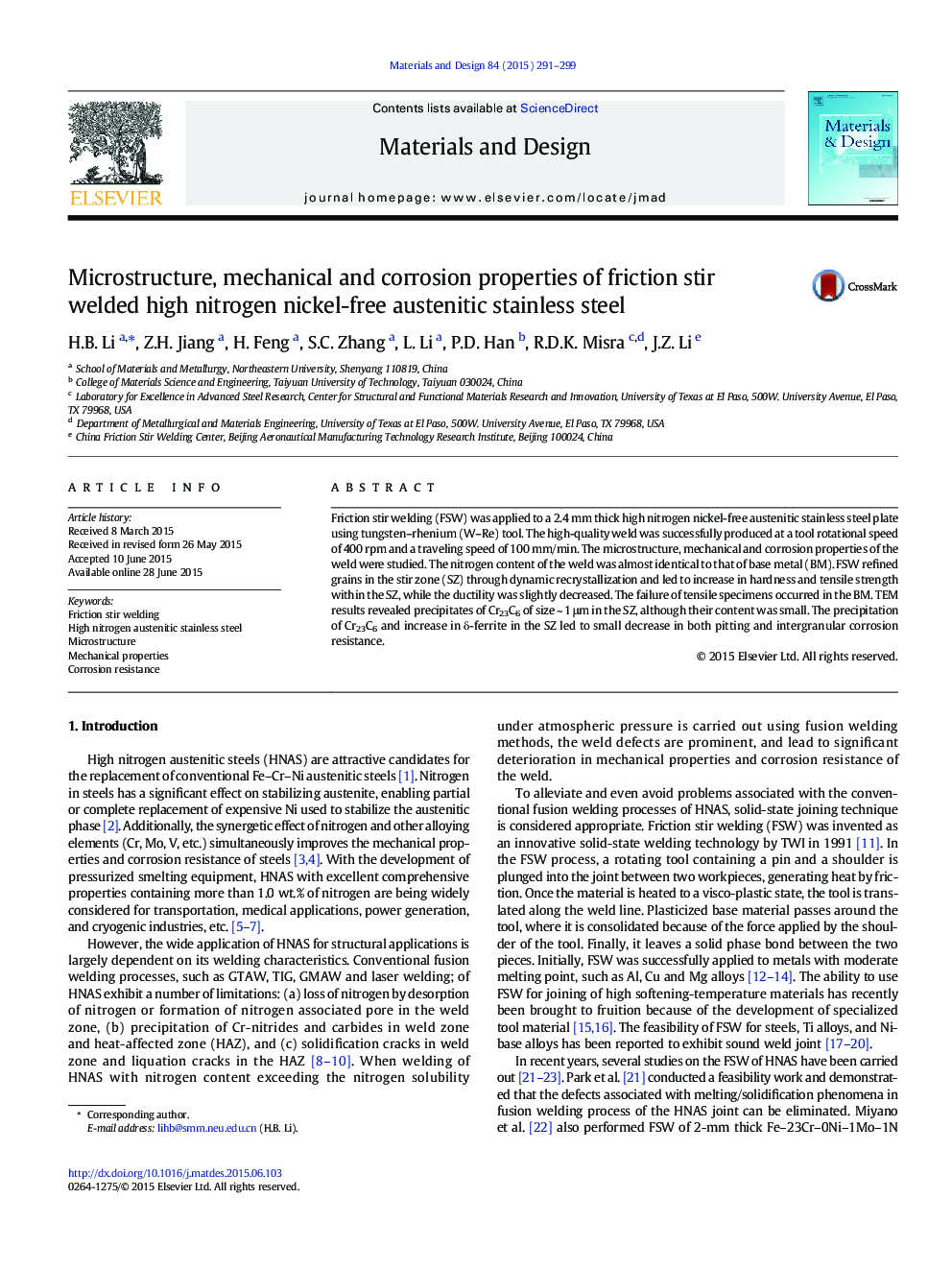| Article ID | Journal | Published Year | Pages | File Type |
|---|---|---|---|---|
| 828248 | Materials & Design | 2015 | 9 Pages |
•Friction stir welding (FSW) was successfully applied to a high nitrogen nickel-free austenite steel with 0.96 wt.% nitrogen.•The small and little amount Cr23C6 was found.•The increment of the amount of δ-ferrite in the SZ was discussed.•The corrosion results revealed that the SZ exhibited excellent corrosion resistance.
Friction stir welding (FSW) was applied to a 2.4 mm thick high nitrogen nickel-free austenitic stainless steel plate using tungsten–rhenium (W–Re) tool. The high-quality weld was successfully produced at a tool rotational speed of 400 rpm and a traveling speed of 100 mm/min. The microstructure, mechanical and corrosion properties of the weld were studied. The nitrogen content of the weld was almost identical to that of base metal (BM). FSW refined grains in the stir zone (SZ) through dynamic recrystallization and led to increase in hardness and tensile strength within the SZ, while the ductility was slightly decreased. The failure of tensile specimens occurred in the BM. TEM results revealed precipitates of Cr23C6 of size ~ 1 μm in the SZ, although their content was small. The precipitation of Cr23C6 and increase in δ-ferrite in the SZ led to small decrease in both pitting and intergranular corrosion resistance.
Graphical abstractFigure optionsDownload full-size imageDownload as PowerPoint slide
